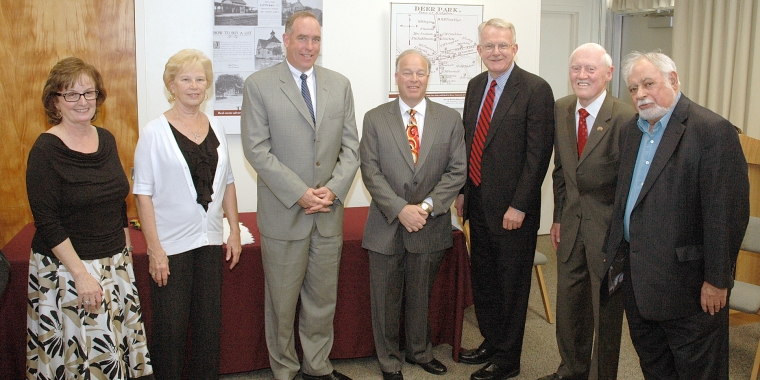
Senators Johnson And Fushillo Voice Opposition To South Shore Windmill Project
Owen H. Johnson
August 8, 2007

Senator Owen H. Johnson and Senator Charles J. Fuschillo, Jr. today expressed opposition to Long Island Power Authority’s (LIPA) proposed windmill farm off the South Shore of Long Island because of skyrocketing costs that potentially could be passed on to the ratepayers. Senator Johnson and Senator Fuschillo, who made the announcement at a news conference at Jones Beach, praised LIPA for seeking alternative energy sources for Long Island, but added that such projects must be more cost effective. The Senators also called for establishment of new tax credits and other incentives to encourage alternative energy use.
Senator Johnson (R-Babylon), Chairman of the Senate Finance Committee, said, "I remain unconvinced that the myriad costs associated with this proposed windfarm are justified by the project’s purported benefits of reducing our dependence on fossil fuels and improving air quality. When we consider that not even one windpark currently operating in Europe has resulted in a single fossil fuel generating plant being taken offline, I must conclude that the cost to ratepayers -- which continues to grow by the minute -- greatly outweighs any economic or environmental benefit that could possibly be achieved. For the sake of Long Island ratepayers, LIPA must face the grim reality about this windmill project and move on to finding real alternative energy solutions that achieve reliable results at a cost ratepayers can afford."
Senator Fuschillo (R-Merrick), Chairman of the Senate Committee on Consumer Protection, said, "With a price tag hovering near $1 billion all told, it’s time that LIPA put this proposal to rest. Alternative energy sources such as wind and solar must play an important role in Long Island’s future, but the cost of such energy must be economically feasible. While we commend LIPA for supporting alternative energy sources to reduce our dependence on foreign oil and the impact their use has on our environment, the wind farm project is to high a price to pay."
Martin Cantor, Director of the Long Island Economic and Social Policy Institute at Dowling College, said, "For the Long Island economy to grow we need to find alternative energy sources that are both financially and environmentally viable. Windfarming should be one way Long Island should go. Unfortunately this project is economically not the one"
When first proposed, estimates for construction costs of the windmill project were between $150 and $200 million. In 2004, Florida Power & Light (FPL) won the right to build the project with a bid of $356 million. The latest estimates provided by FPL show the project ballooning to and estimated $697 million.
Senator Johnson and Senator Fuschillo believe that the ratepayers would ultimately have to bear the burden of these costs. According to Newsday, while FPL is paying for the construction, the energy LIPA would have to buy from FPL would be at a higher price to help cover the construction costs. For instance, under FPL’s original bid and cost estimate, LIPA would have to buy the wind energy from FPL at a starting cost of $94.97 per megawatt hour and rising to over $150 megawatt hour by the end of the contract. LIPA currently pays between $60 and $70 per megawatt hour from existing power sources. In addition, LIPA would have to pay for the transmission cables that would be installed on the ocean floor, under the barrier islands, and under the Great South Bay to deliver the energy from the wind mills to the shore at an estimated cost of $100 million.
The windmill farm is projected to provide power to an estimated 44,000 Long Island homes, but only under 100 percent ideal conditions. In Europe, which has a number of existing wind farms, turbines are operating on an average of less than 20 percent of their rated capacity and electricity rates are still high. Denmark for example, has the highest percentage of wind-produced electricity in the world, yet also has electricity prices that are nearly 100 percent higher than elsewhere in Europe.
In 2005, Senators Johnson and Fuschillo sponsored a state law to make residential solar energy systems more affordable by exempting them from state sales and compensating use taxes and another law that increased the personal income tax credit given to individuals who purchase solar electric generating equipment.
This year, the Senators sponsored legislation that would provide a tax credit for businesses that install alternative energy sources, similar to the program already in place for homeowners. The measure has been approved by the state Senate.
Share this Article or Press Release
Newsroom
Go to Newsroom

